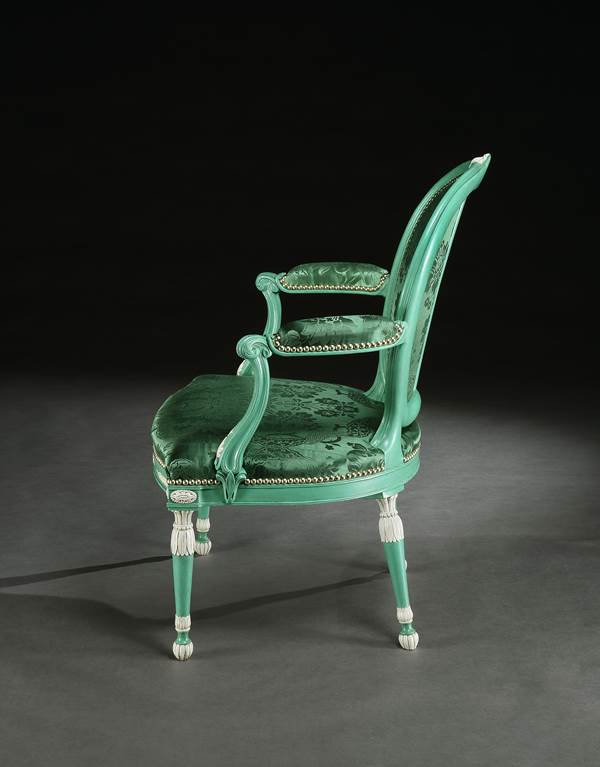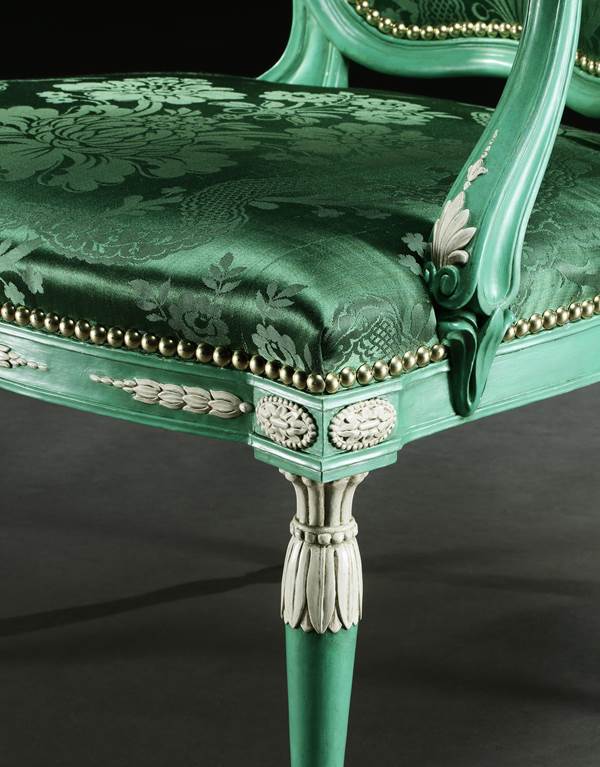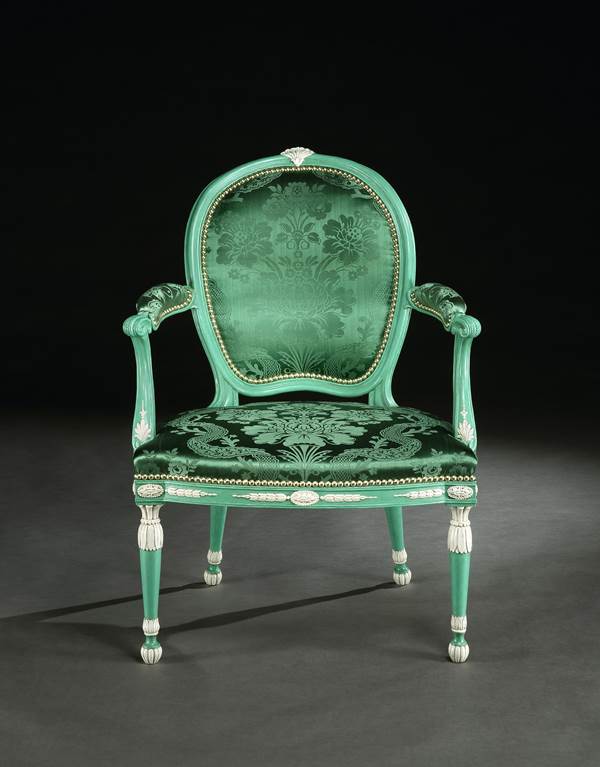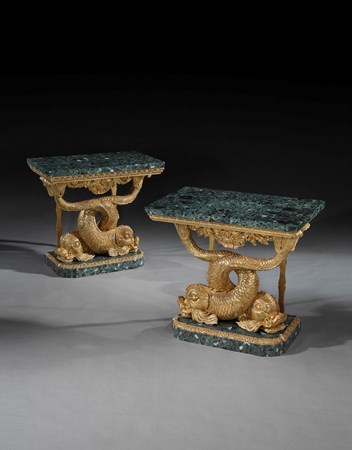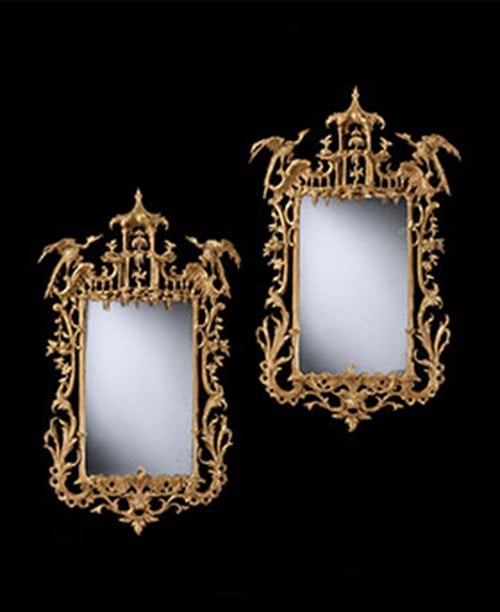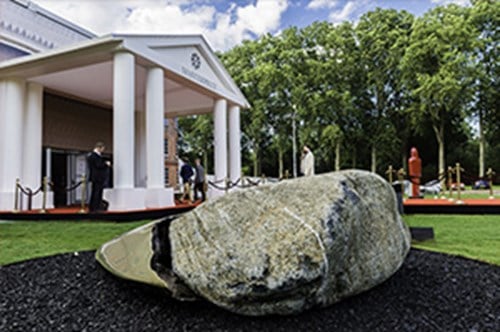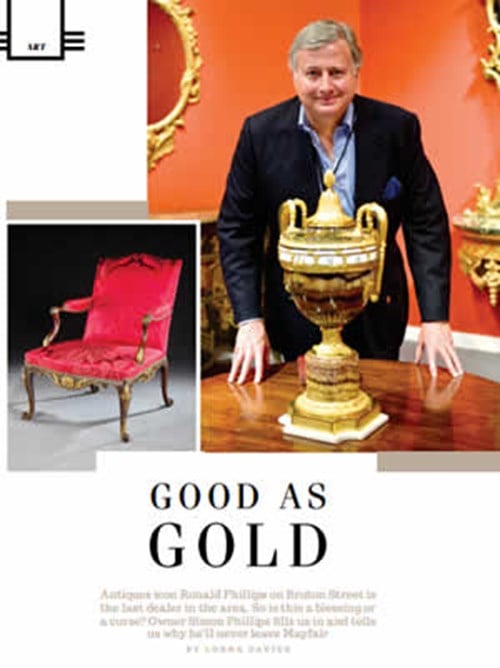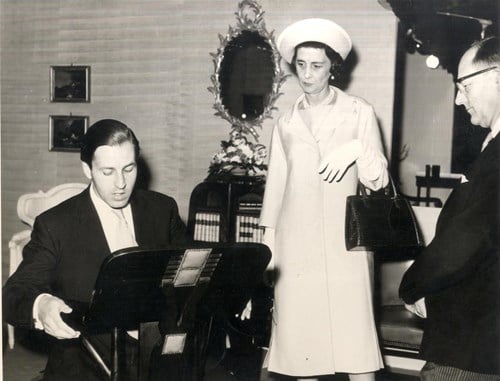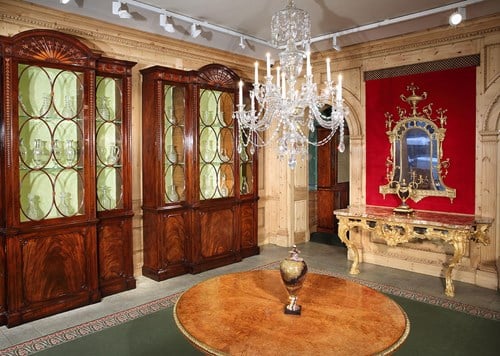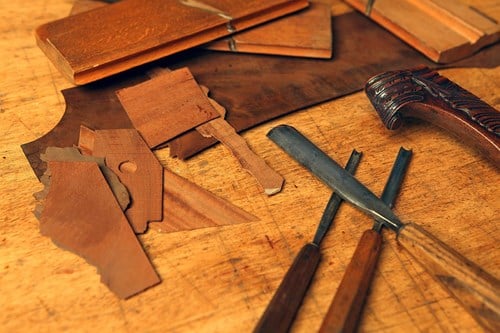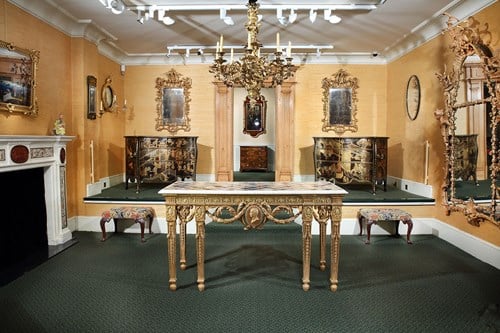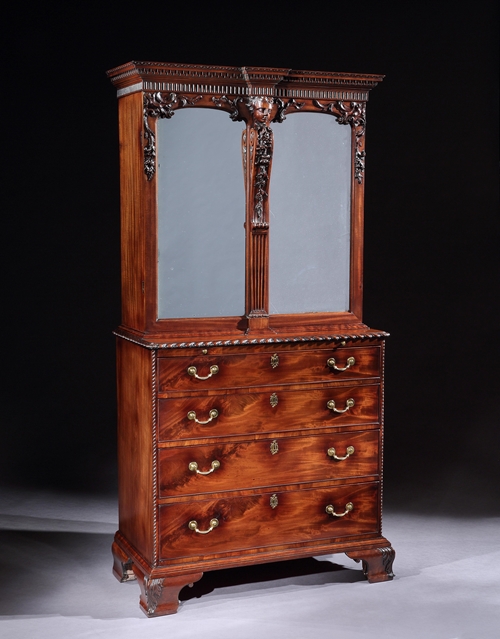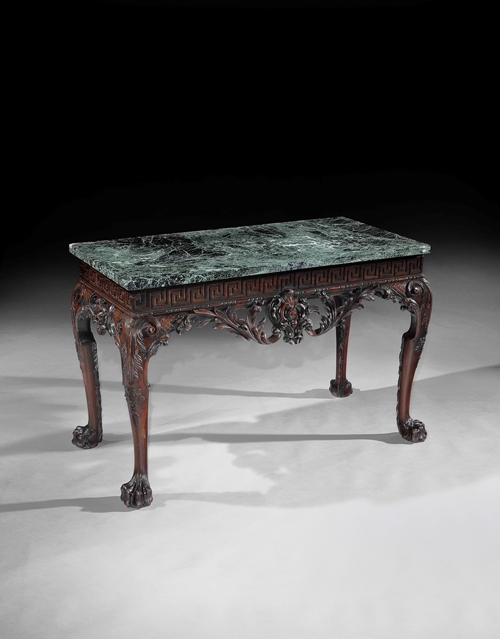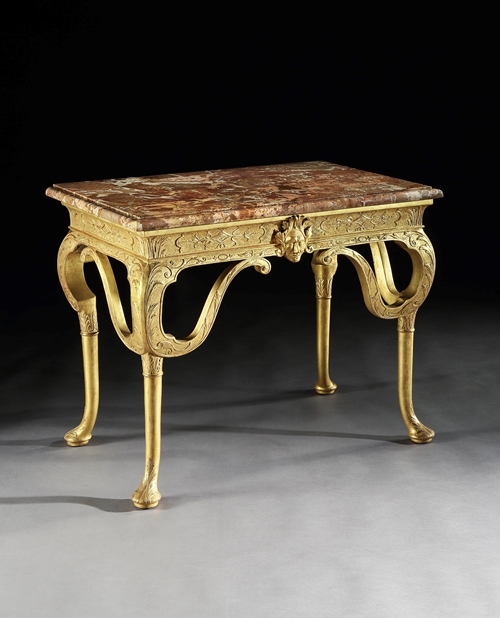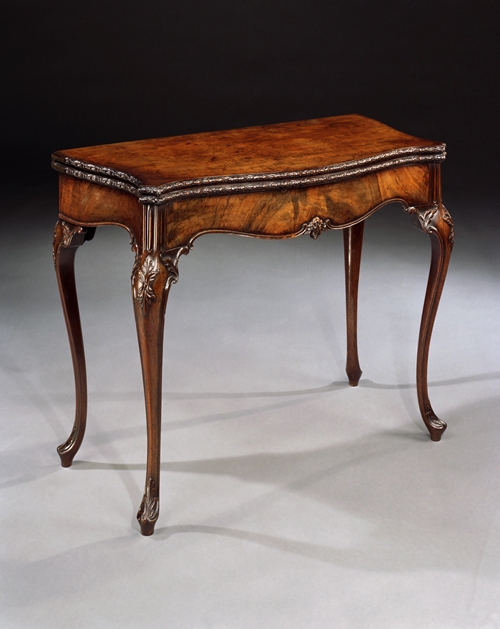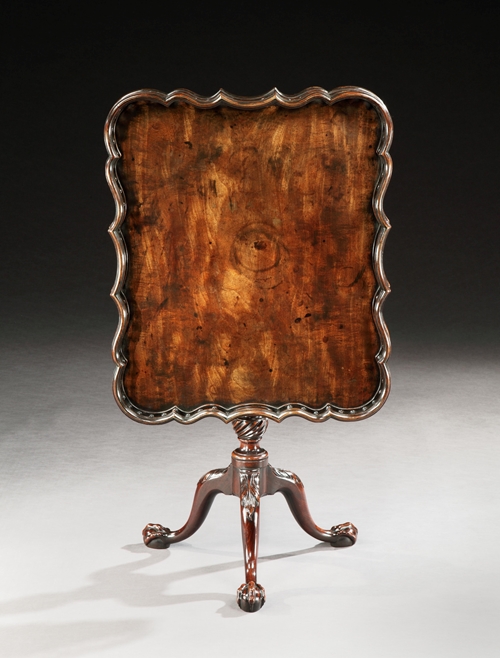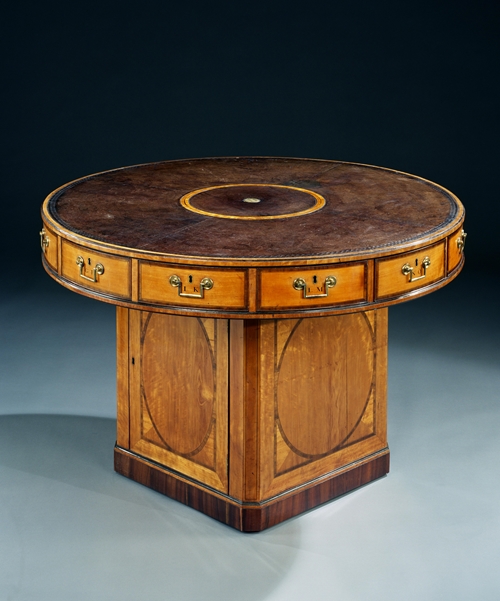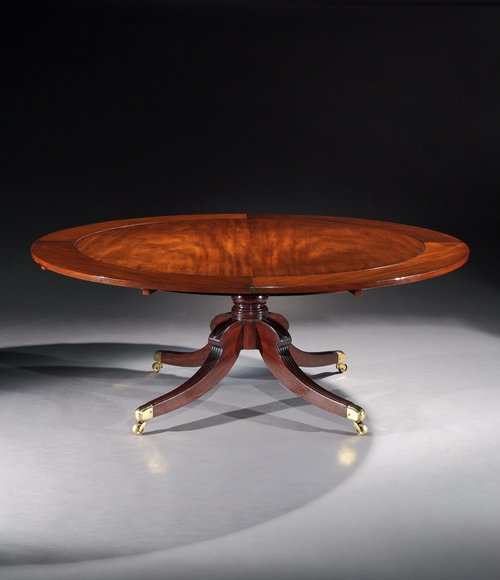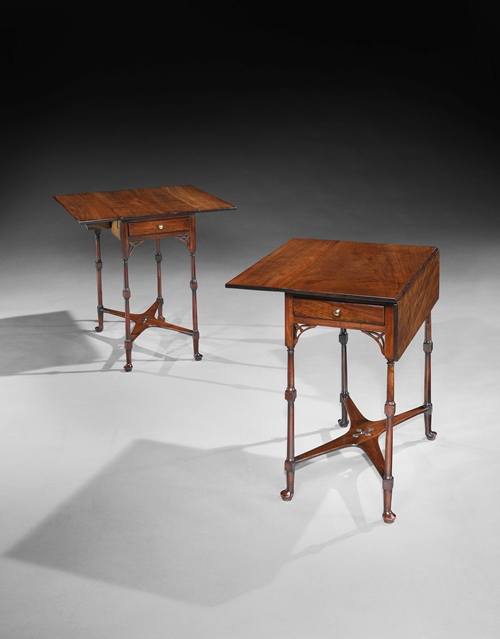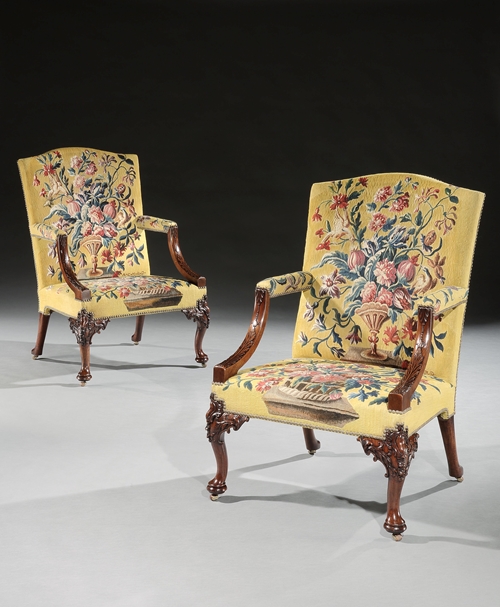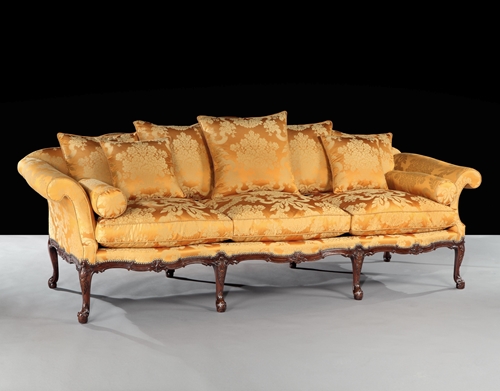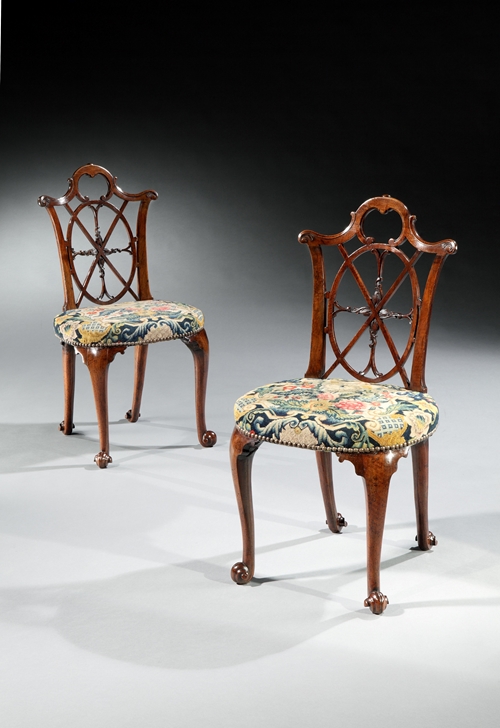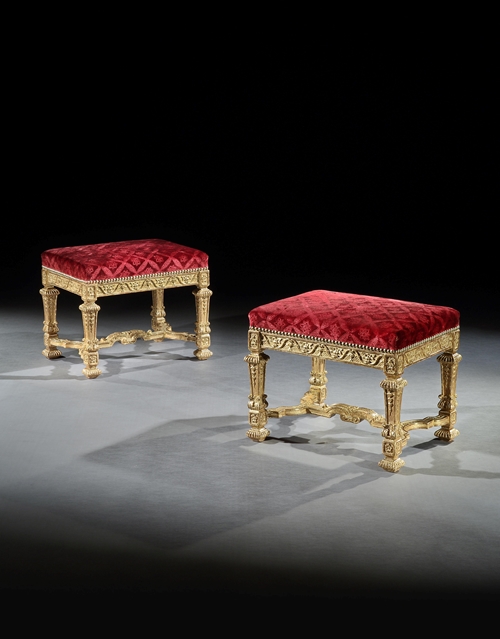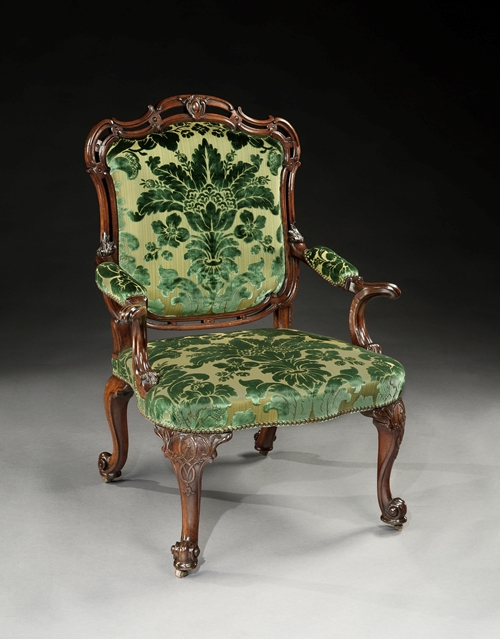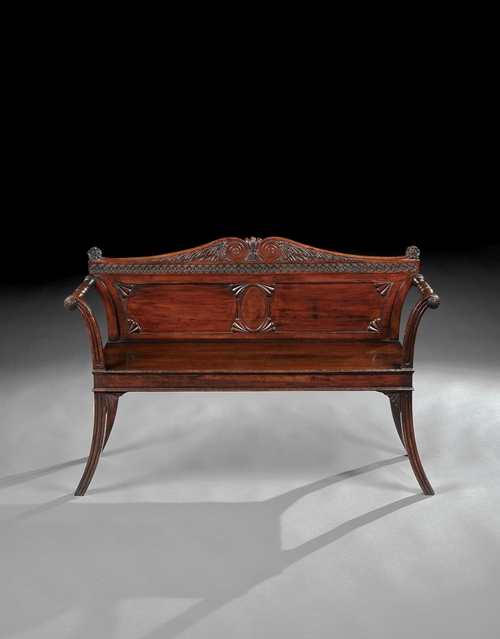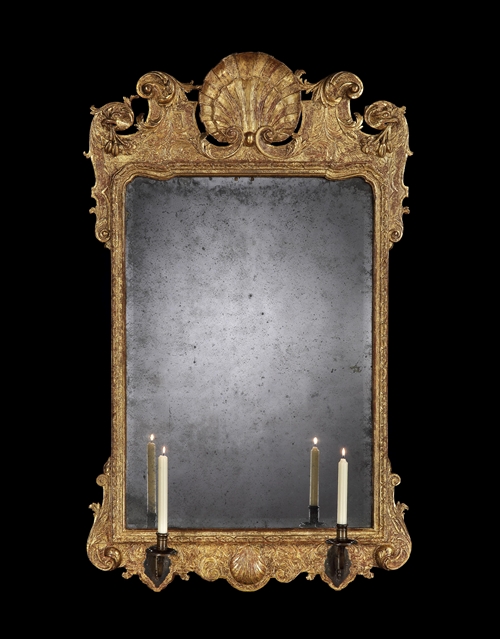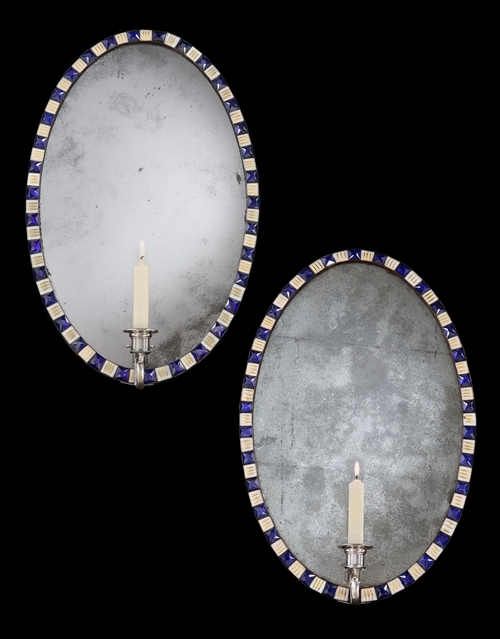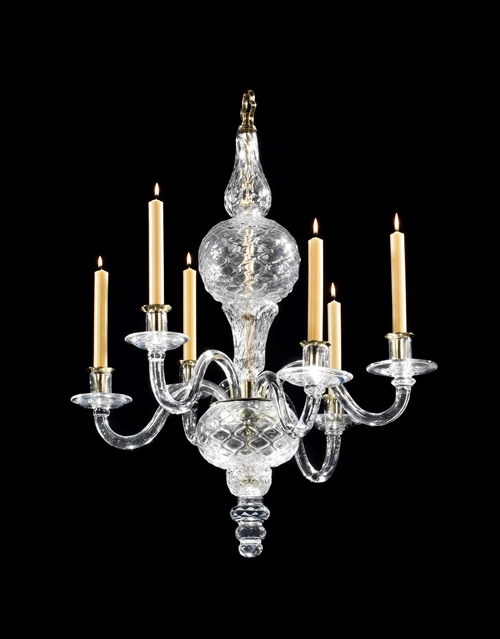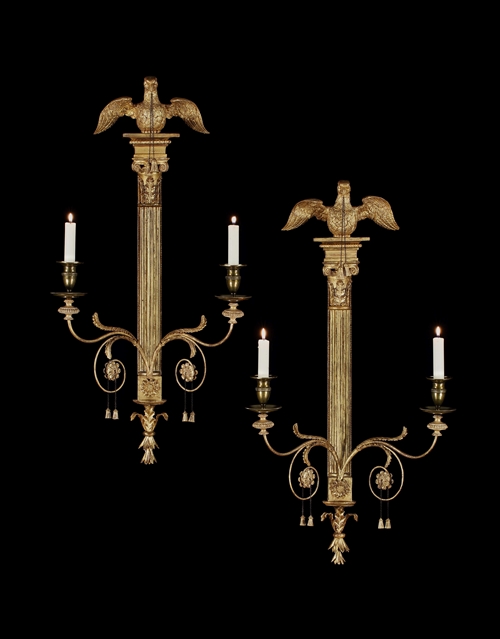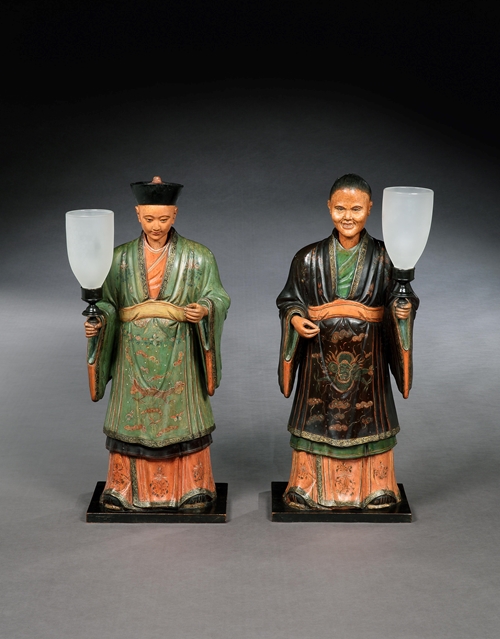A George III green and white japanned open armchair by Thomas Chippendale.
Note: Careful conservation has revealed traces of the original green and white japanned surface, which has been reinstated.
The green silk damask and the gilt nails follow Chippendale’s itemisation in the bill. The damask pattern chosen for this chair has been woven specially to a period design, and the green dye matches that of a limited number of contemporary green vegetable dyes.
THE GARRICK SALOON SUITE FROM NO. 5 ROYAL ADELPHI TERRACE
The chairs formed part of a well-documented suite of sixteen armchairs, two bergère chairs and a sofa commissioned by David Garrick from Chippendale for the Saloon at No. 5 Royal Adelphi Terrace, London, England, in 1772.
The Garricks’ patronage of Thomas Chippendale can be placed between 1768 and 1778. The original bills are in the collection of the Victoria and Albert Museum in London. Letters from Mrs. Garrick to Chippendale show how their working relationship became strained when a dispute arose over the cabinet-maker’s charges. When Chippendale filed a legal challenge, the relationship deteriorated further.
David Garrick and his wife Eva Maria enjoyed a lavish life in London society. Both their houses – a villa at Hampton near London, and No. 5 Royal Adelphi Terrace – were luxuriously furnished by Chippendale and other leading cabinet-makers.
Royal Adelphi Terrace, consisting of eleven houses designed by Robert and James Adam, was at the time the largest neoclassical building in the capital. When difficulties in construction pushed the Adam brothers close to bankruptcy, their friend David Garrick stepped in to buy No. 5, becoming their first occupant. A lottery to raise funds and to sell further houses saved the project from collapse.
Floorplans of Garrick’s house were published by Arthur Bolton in his book on the Adam brothers. Most of the terrace was demolished in 1936, and only one house remains intact today.
The first-floor Drawing Room at No. 5 Royal Adelphi Terrace was designed by Robert Adam and entirely furnished by Chippendale. The Drawing Room ceiling, executed by Joseph Rose, is preserved in the Victoria and Albert Museum, London.
Thomas Chippendale’s bill to Garrick for the Drawing Room suite, dated 28 February 1772, states:
To 12 very neat carv’d Cabreole arm’d Chairs, Japan’d Green & White, stuffed & cover’d with Green silk Damask & finish’d with Gilt nails
Fine Serge Covers to Ditto
2 ditto Burjairs Japan’d in the same manner stuff d in linnen & a fine feather Cushion to do
A large Carved Sofa to Match the Chairs, Japan’d Green & White, stuffd and cover’d with your Damask and finishd with Gilt Nails, a large feather Cushion cover’d with Do and Castors.
A further four armchairs to match were invoiced the same year:
4 neat carv’d Cabriole Armd chairs Japand Green & white to match the others & stuffd in Linen Green Serge Cases.
An inventory of 1797 lists the green and white japanned suite in the Drawing Room. The walls of this room were covered in green damask with gilded fillets, creating a sumptuous background. The green and white japanned seat furniture which was placed around the walls was covered in the same green damask.
Other rooms had similar japanned furniture. The four armchairs invoiced later were placed in the back room on the second floor where Hannah More, a family friend, lodged for some time. Her reports shed a light into the vibrant gatherings at the Garricks’. On one ‘great evening’, Hannah informed her family, ‘Lord and Lady Camden, their daughters, Lady Chatham and daughters, Lord Dudley, Mr. Rigby, Mrs. Montagu, the Dean of Derry and his lady, Sir Joshua [Reynolds] and his sister, Colman, Berenger’ and others were all present. Lord Camden, she thought, looked like an elderly physician, though there was ‘something of genius about his nose’.
Following the deaths of David Garrick in 1779 and his wife Eva Maria 43 years later in 1822, a series of auctions between 1822 and 1823 sold off the contents of both their houses. The auction catalogue of Messrs. Burrell & Sons dated 3 July 1823, selling the effects from the Adelphi house, lists the suite in the Drawing Room. For the sale, the suite was divided into four lots:
Lot 13 Four japanned cabriole chairs with crimson damask, 2 bergiere, ditto, with feathered cushion, and 2 stools with cushions.
Lot 20 A japanned cabriole sofa, covered with green silk, damask and down cushions.
Lot 21 Two bergeire chairs to correspond, with down stuffed in canvas cushions, in white leather and damask cases.
Lot 22 Twelve cabriole chairs (en suite).
Lot 13 included four armchairs from the suite as well as two bergère chairs and two stools which were not part of the suite. The stools were invoiced by Chippendale as being japanned white.
Today only parts of the suite can be traced. The settee was once owned by the American dealers Fleming & Meers Ltd., Washington, DC, USA, and was offered for sale to the Birmingham Museum of Art, Alabama, USA: sadly it cannot be traced any further. At that stage the settee was gilded. One bergère chair which has recently been repainted white and green is in the collection of the Victoria and Albert Museum; the companion, repainted green and white in the correct manner, is in Bolling Hall Museum, Bradford, England. A single armchair with later gilding was sold by Hotspur Ltd., London, in the 1970s and is recorded in the Hotspur Archive. A further pair of armchairs was sold at an auction house in Shrewsbury, England, in 1993. The remaining eleven chairs from the suite have not yet been traced.
Literature:
Mr. Saunders, ‘A Catalogue of the Library, Splendid Books of Prints, Poetical and Historical Tracts of David Garrick Esq.’, 23 April 1823.
Messrs. Robins, ‘A Catalogue of Miscellaneous Assemblage of Valuable Property of Mrs. Garrick, Dec’d’, 23 May 1823.
Mr. Christie, ‘A Catalogue of The Small, But Valuable Collection of Italian, French, Flemish, Dutch and English Pictures, The Property of the late David Garrick, Esq. Deceased’, 23 June 1823.
Messrs. Burrell & Sons, ‘Royal Adelphi Terrace, A Catalogue of the late David Garrick Effects – in the Adelphi’, 3 July 1823.
Messrs. Burrell & Sons, ‘A Catalogue of the Valuable and Curious Effects of The Late David Garrick Esq.’, 21 July 1823.
Mr. Christie, ‘A Catalogue of a Valuable and Highly Interesting Collection of Engravings, The Property of the late David Garrick Esq.’, 5 May 1825.
Arthur Bolton, The Architecture of Robert and James Adam, 1922, vol. II, 1922, pp. 18–49.
The Garrick Club, London, pamphlet to mark the 1974 centenary of the late Sir Henry Irving’s membership, 1974.
Christopher Gilbert, The Life and Work of Thomas Chippendale, 1978, vol. II, p. 98, illus. 160; a bergère from the Garrick suite.
Fleming & Meers Ltd., Washington, DC, USA, letter to The Birmingham Museum of Art, Alabama, USA, 19 January 1987.
Halls Fine Art Auctions, Shrewsbury, England, ‘Catalogue of European and Oriental Ceramics, Glass and Works of Art, Silver and Vertu, Collectors Items, Clocks, Tapestries, Rugs and Textiles, Furniture, Picture, Garden Statuary and Militaria’, 3 September 1993, lot 206.
James Hepworth, letter to Christopher Gilbert, 26 June 1994.
Kerri Andrews, The Letters of Hannah More, digital edition, posted 24 June 2016.
-
Provenance
David Garrick, London, England.
Private collection, England.
Looking for something similar? YOU MAY ALSO LIKE
YOU HAVE RECENTLY VIEWED ITEMS
- CAN WE HELP YOU?
- +44 (0)20 7493 2341
- [email protected]

